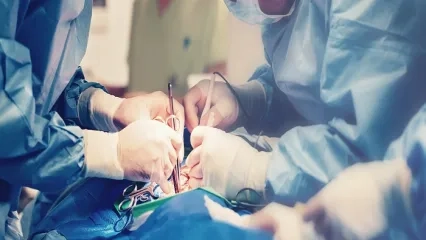Alo Yeditepe
Alo Yeditepe
What is Lymphedema?
The lymphatic system, a component of the circulatory system, is also essential for immune function. Lymphedema is defined as swelling in the face, neck, abdomen, lungs, and especially the arms and legs caused by an abnormal accumulation of lymph fluid in the body for a variety of reasons. Lymphedema, an irreversible, progressive, and chronic disease can be managed with proper treatment and care. Early detection is critical in this case.
What is Lymphedema?
The lymphatic system begins with small lymph capillaries and wraps like a net around the body. Larger lymph vessels form as the capillaries in this network system decrease in number and diameter. There is no heart or artery-like mechanism to facilitate circulation in the lymphatic system, as there is in the blood circulation system. Instead, muscle movements, lymphangiomotor activity (contraction and relaxation due to the valve structure of the lymph vessels), active and passive joint movements, and breathing provide lymph fluid circulation through the lymph channels. However, when these pathways are disrupted, the lymph load increases. Lymphedema develops when the amount of lymphatic fluid accumulated in the body exceeds the capacity of the lymphatic system. This condition is commonly known as “Elephantiasis.”
What are the Causes of Lymphedema?
Primary lymphedema is caused by a mutation in the genes responsible for lymphatic system development. The occurrence of lymphedema in the patient has no obvious cause. Primary lymphatic edema, which affects one in every 6,000 people, affects women more than men.
Primary lymphedema is classified into three major groups based on the age of onset.
Congenital Lymphedema
Lymphedema develops during or shortly after birth. Fluid accumulation in the legs is common. It can, however, be found in other areas or even in the face with the leg. It affects women twice as much as men.
This group accounts for 5-10% of all cases of primary lymphedema.
Precocious Lymphedema
It first appears during puberty. It is the most common type of primary lymphedema. It affects women four times more than men. This group accounts for 75-80% of all cases of primary lymphedema.
Lymphedema Tarda
It appears after the age of 35. Primary lymphedema cases are in this group.
Secondary (acquired) Lymphedema
It develops as a result of the removal of lymph nodes and vessels in the neck, axillary, or inguinal region following certain surgeries, chemotherapy, or radiation treatment. Lymphedema
may result from the removal of lymph nodes for the treatment of certain cancers such as breast, uterine, ovarian, prostate, and skin cancer. The risk of developing lymphedema increases if radiotherapy is performed after the lymph node is removed. The lymphatic system can be harmed as a result of repeated infections, injury, or injury. Lymphedema may develop as a result of a decrease in the fluid-carrying capacity of the lymph vessels as people age.
Some risk factors may increase the likelihood of secondary lymphedema, which is more common after cancer treatment.
These are:
- Removal of additional lymph nodes,
- Multiple breast surgeries and tissue damage,
- Radiotherapy treatment • Chemotherapy therapy • The patient is overweight;
- There are structural differences in the lymphatic system between people; and
- The patient is not paying attention to hygiene or factors that will cause lymphedema.
Lymphedema Symptoms
- It is unilateral or asymmetrical.
- Except in rare cases, it is painless.
- Except in rare cases, skin color is normal.
- It is edema of the hand and foot's back.
- Skin folds are deepened.
- It has become difficult to grasp the skin of the second finger on the hand or foot depending on the area of edema.
Significance of Early Diagnosis in Lymphedema
Swelling occurs in the body when lymphedema appears, primarily as a result of fluid accumulation in the arms and legs. The patient's quality of life suffers a significant decrease depending on the region where it forms. Anxiety, depression, and adjustment issues, as well as social and sexual issues, may arise. Swelling of the arms and legs of patients who receive delayed, inadequate, or incorrect treatment progresses. These issues usually have an impact on the treatment's success. As a result, it is critical to begin treatment as soon as possible. It may be possible to eliminate the negative effects of the disease on quality of life much more easily by using the appropriate treatment methods.
Lymphoedema Treatment
Lymphedema is a chronic condition that can be managed with physical therapy. Manual lymph drainage, compression bandages, skin care, and exercise are the four main components of the treatment: At the end of the treatment, edema is attempted to be controlled with pressure garments. The treatment must be carried out with the involvement of a Physiotherapy and Rehabilitation specialist and a physiotherapist who has received special training on this subject.
Manual lymph drainage
It is a special massage technique applied by hand, which results in the free flow of blocked lymph fluid in the lymphatic system. It is hoped that this procedure will remove lymph fluid from the edematous area and allow it to flow to other parts of the body. The type and order of the manual technique are tailored to each patient. This varies depending on the stage and location of the edema. Manual lymph drainage should not be confused with other massage techniques that do not affect lymph circulation. Because other massage techniques are not only ineffective for lymphedema, but can also be harmful.
Compression Bandaging
Lymphedema bandages apply high pressure during muscle activity and low pressure during muscle rest, preventing lymph fluid from re-accumulating in the affected limb. Bandaging should be continued until the edematous limb's thinning stops. Following the bandaging sessions, custom-made compression socks are provided.
Special Exercises
Muscle activity is essential for lymphatic fluid drainage. Following manual lymph drainage and compression bandaging, a customized exercise program must be implemented.
Considerations for Patients with Risk and Lymphedema
- For the first three weeks after breast surgery, patients' arms should not be opened more than 90 degrees, and manual lymph drainage should be performed as a precaution.
- The skin should be kept clean and completely dry, not damp.
- Skincare and elasticity should be prioritized, and they should be moisturized on a regular basis.
- Caution is advised because the cut can cause cat-dog scratching, fly-insect bites, infection, and damage to the lymphatic pathways.
- Patients with lymphedema should avoid hot water and hot spring water and should avoid sunbathing.
- The affected arm should not be injected.
- Softening creams should be applied to the affected foot, and calluses should not be cut.
- When cutting the nails, take care not to cut the skin.
- Unwanted hair should be removed using a trimmer, but no razor should be used.
- Gloves must be worn when working in the kitchen or the garden to avoid cuts.
- Exercises should be performed on an ongoing basis to ensure proper lymph circulation.
- Swimming is the preferred sport if one wishes to participate in sports.
- Underwear, clothing, and jewelry should not be so tight that they leave marks on the skin.
- Arm socks and compression bandages must be worn to protect against pressure drops during the flight.
This content was prepared by Yeditepe University Hospitals Medical Editorial Board.
”
See Also
- What is Scoliosis? Exercise Methods in Scoliosis Treatment
- Benefits of Being Limber
- Benefits of Physiotherapy and Rehabilitation in Spinal Cord Injury
- Fibromyalgia in Children
- Spinal Cord Injuries and Symptoms
- Beware of Joint and Muscle Pain in the Winter Months!
- Lumbar Disc Herniation (Herniated Disc)
- Sports Injuries
- The Way to Peace: Yoga
Alo Yeditepe




